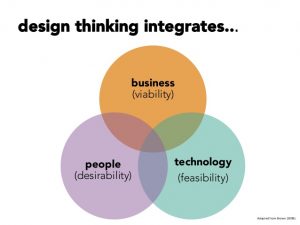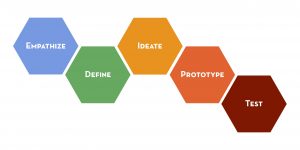Design Thinking Revolutionizing The Way People Work
They say design thinking is just for the designers but in fact it is an approach which can fundamentally change the way people work. Design Thinking has now become an integral part of modern businesses and it has led companies like Apple, Nike, IBM towards creating truly remarkable products.
We believe that by learning and adopting Design Thinking, Pakistani entrepreneurs can innovate and create products that are much more valuable and effective in solving the customer’s problems. This is why today we are going to talk about the basics of this methodology so that you can transform your ideas into valuable products and businesses.
Difference Between Design & Design Thinking:
Before we go further into this topic, it is important that we understand the difference between design and design thinking. Steve Jobs best describes it:
Most people make the mistake of thinking design is what it looks like. People think it’s this veneer — that the designers are handed this box and told, ‘Make it look good!’ That’s not what we think design is. It’s not just what it looks like and feels like. Design is how it works.
— Steve Jobs
In the past, design was just about aesthetics; making products visually attractive, but now it is about applying the principles of design to the way everything works. This shift is the result of increased complexity of modern technology and businesses and the people (both users and creators) need to make sense of them.
According to Jon Kolko (Founder of Austin Centre for Design & Author of Well Designed:)
“People need their interactions with technologies and other complex systems to be simple, intuitive, and pleasurable”
What is Design Thinking:
Design thinking is a method for creative problem solving which uses designer’s sensibility and methods to match people’s needs with what is technologically feasible and what a viable business strategy can convert into customer value and market opportunity.

Design Thinking Process:
We will focus on the five-stage model proposed by the Hasso-Plattner Institute of Design at Stanford (d.school). d.school is the leading university when it comes to teaching Design Thinking. The five stages of Design Thinking, according to d.school, are as follows: Empathize, Define (the problem), Ideate, Prototype, and Test.

Let’s take a closer look at the five different stages of Design Thinking.
-
Empathize:
Design Thinking starts by empathizing with the needs and the problems of the customer. This allows design thinkers to remove their personal bias and assumptions in order to gain insights into the needs of the customers. Then a series of activities (i.e. brainstorming sessions, role playing and research) are performed to understand the customer experience.
-
Define:
This step involves analysing the information gathered in the previous step to define the core problems of the customer in the form of a problem statement. After this stage, designers start generating ideas that will solve the problems of the users.
-
Ideate:
At this stage designers start generating ideas while considering the needs of the end-user at the same time. It is important to get as many ideas as possible by using free thinking to expand the problem space.
-
Prototype:
Now the designers start building prototypes which are inexpensive initial versions of the original products to investigate their ideas and solutions. These prototypes are shared within a team, other departments or with a small focus group to identify the best solutions. This is an experiential phase and the goal is to find the best solution for each problem and at the end of this phase, design team starts narrowing down solutions by accepting or rejecting prototypes based on user feedback.
-
Test:
In this phase, selected prototypes are extensively tested, and the results are used to redefine the problems, gain further insights about the user for a continuous refinement of the end product.
It is important to note that design thinking is a non-linear process and relies on the process of iteration. This means that user feedback is continuously used to improve the ideas until no further refinement is needed.
Design Thinking is an effective means of gaining competitive advantage and it can be applied in any industry for innovation. Given the importance of design thinking, we need to incorporate design thinking into the culture of our organizations by encouraging teamwork and experimentation.
We recommend everyone to learn design thinking as it is a proven and repeatable process that can yield extraordinary results. It does not matter whether you’re an entrepreneur or a professional aiming to innovate, you don’t need to be a designer to think like one.
- Categories:
- Ecosystem